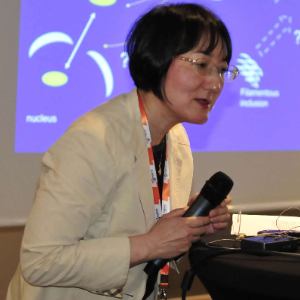Title : Neuropathology of neuronal intermediate filament inclusion disease (NIFID): Immunophenotypic and topographical analysis of the neuronal inclusions
Abstract:
Neuronal intermediate filament inclusion disease (NIFID) is a rare neurodegenerative disorder which is a type of frontotemporal lobar degeneration (FTLD) with various clinical features including frontotemporal dementia and pyramidal and extrapyramidal signs occurring at a young age. According to the latest pathological classification of FTLD, NIFID is categorized in the FTLD-FUS group because of the neuronal cytoplasmic inclusions (NCI) immunoreactive for fused in sarcoma protein (FUS). Several subtypes of NCI in NIFID brains were shown by immunohistochemical and electromicroscopic techniques; however, the maturation process and interaction of each subtype of NCI are still unknown. By immunohistochemical and semiquantitative analysis of NCI, we found that 1) cytoplasmic mislocalization and aggregation of FUS without nuclear FUS immunoreactivity appeared in the area without neuronal loss, 2) more than one NCI type can develop in a single neuron during the disease process, and 3) the frequency of another subtype of NCI without FUS immunoreactivity, hyaline conglomerate inclusions, was well correlated with neuronal loss in advanced lesions. These findings suggest that in the course of the disease, 1) cytoplasmic mislocalization and aggregation of FUS begin at onset or an early stage of the disease, 2) fibrous (hyaline conglomerate, made of intermediate filament) inclusion will be made in the neuron with cytoplasmic FUS aggregation, and 3) when neuronal degeneration progress, in the nearly end stage of suffered areas, surviving neurons will have recovered nuclear FUS immunoreactivity and some of them have FUS-negative hyaline conglomerate inclusions. The mechanisms and processes of FUS-associated neurodegeneration are not yet known. I will discuss relation between neuronal inclusions and neurodegeneration using the data of this study and review of the literature.




